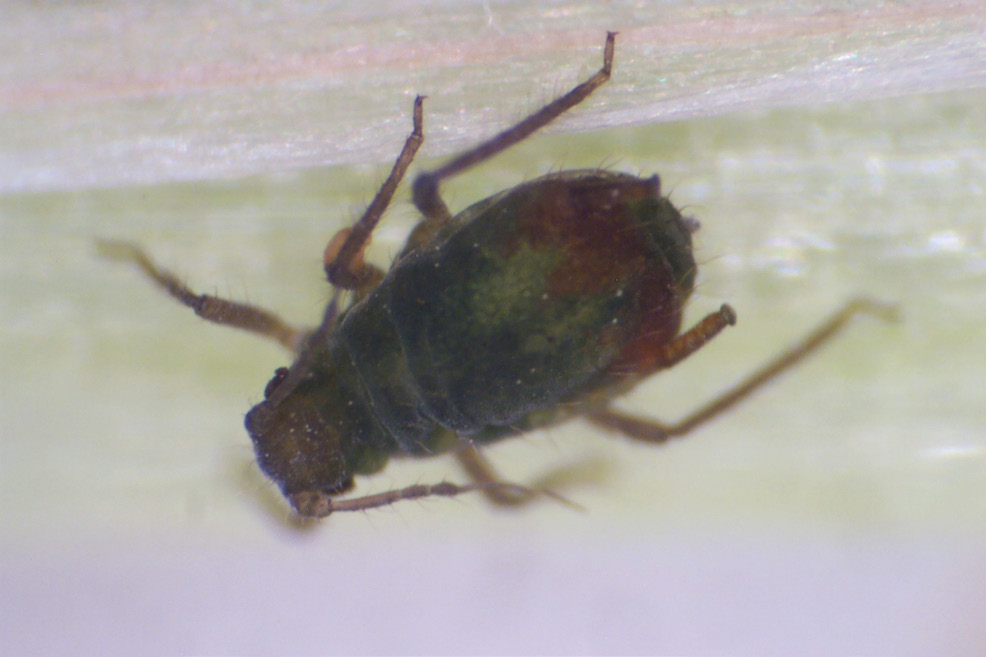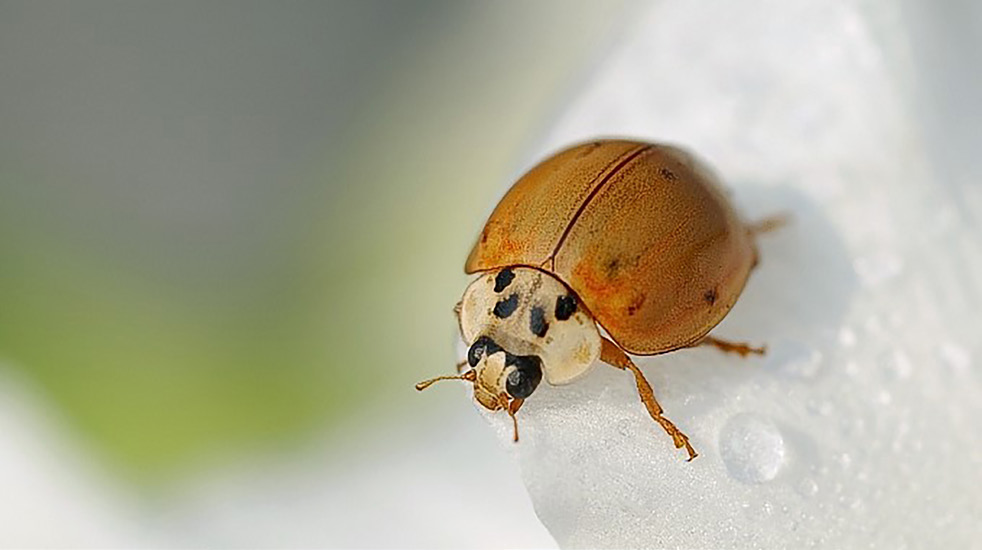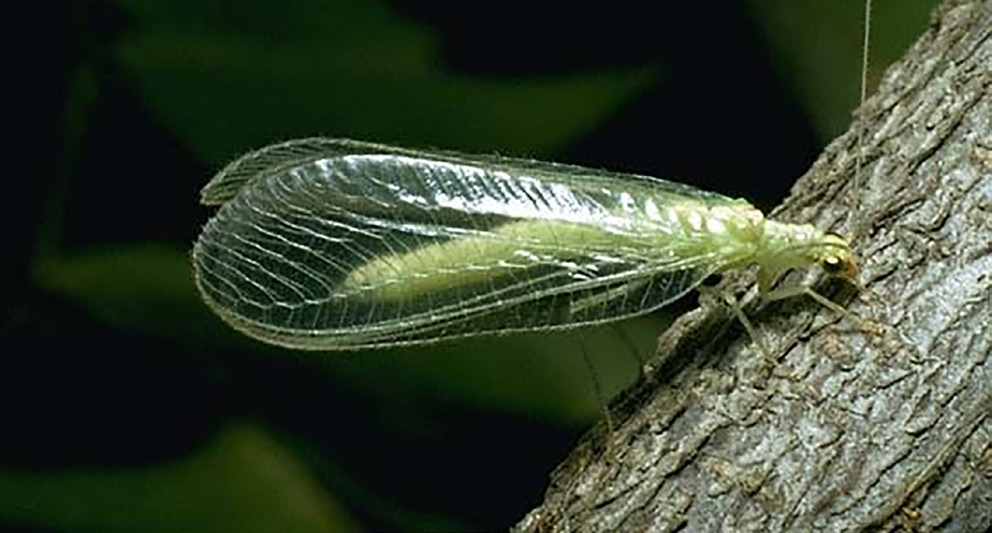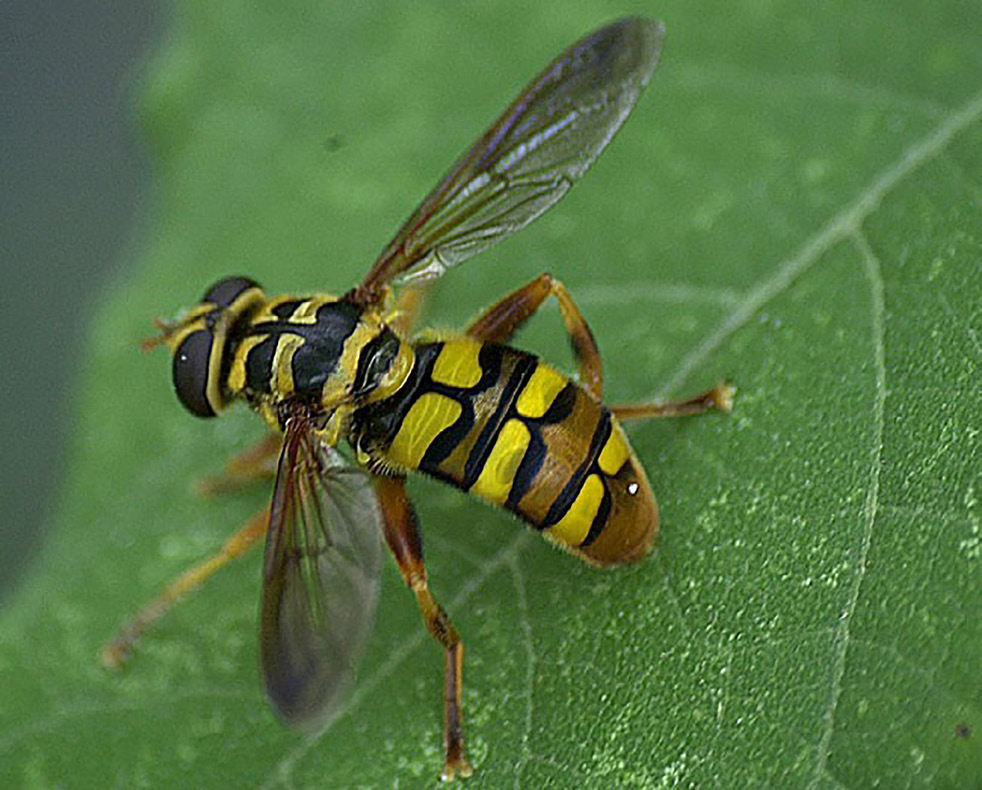Small Grain Aphids in Oklahoma and Their Management
Greenbug Schizaphis graminum
Russian wheat Aphid Diuraphis noxia
Bird cherry-oat aphid Rhopalosiphum padi
Rice root aphid Rhopalosiphum rufiabdominalis
Corn leaf aphid Rhopalosiphum maidis
English grain aphid Sitobion avenae
(No Common Name) Sipha maydis**
**an exotic species native to Europe that was recently found in New Mexico and western Colorado. To date, it has not been found in Oklahoma.
Aphids are the most important insect pests of small grains in Oklahoma. Present from crop emergence through grain fill, the changeable climate in Oklahoma makes it difficult to predict when they will cause damage. Aphids affect grain yield directly and indirectly. The greenbug and the Russian wheat aphid possess toxins they inject into the plant while feeding, which cause visible damage symptoms. The bird-cherry oat aphid, the rice root aphid, the English grain aphid and the corn leaf aphid do not cause visible injury as they feed, but remove vital plant fluids the plant needs to develop. Several of these cereal aphids are vectors of plant viruses such as the one that causes barley yellow dwarf disease (BYDV).
The decision to control aphids in winter wheat with insecticides requires careful consideration of profit margins, control costs and yield potential with each wheat field. Climate, planting times, wheat varieties and production practices are different throughout Oklahoma. A well-developed Integrated Pest Management (IPM) program gives a producer flexibility to make economically and environmentally sound control decisions.
Identification, Biology and Nature of Damage
For identification purposes, only the wingless forms are described. Although most aphids produce winged forms in order to migrate, most field scouts encounter the wingless forms. Wingless aphids are female, and give birth to live young (also female). This process is known as parthenogenesis. Therefore, aphids can increase in numbers rapidly. Newly born aphids molt (shed their skin) four times before becoming an adult. They can become adults within seven to 10 days from birth at optimal temperatures.
Greenbug (GB). A mature greenbug is 1/16 inch long with an oval-shaped, light green body and a
darker green stripe down its back. It has two cornicles with dark tips on the posterior
end of the abdomen, green legs with dark tarsi (feet) and dark antennae. (Figure 1).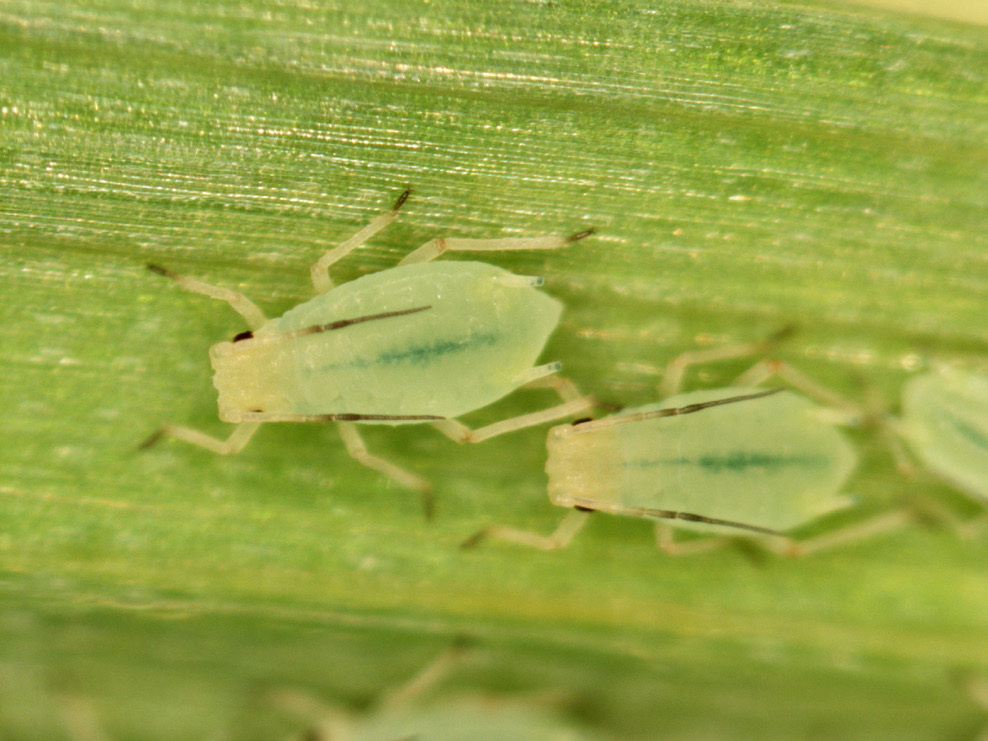 Figure 1. Greenbug (Photo: Richard Grantham, Oklahoma State University).
Figure 1. Greenbug (Photo: Richard Grantham, Oklahoma State University).
Greenbugs are active throughout the winter wheat growing season. They grow and reproduce at temperatures between 50 F and 95 F, and populations can build rapidly. Adult greenbugs are winged or wingless and often occur together. Wingless forms are more numerous, since all immature greenbugs are wingless. Winged aphids are a main source of new infestations when they migrate.
The greenbug feeds on plant sap through its straw-like mouthparts and injects chemicals
that injure the plant. Young wheat plants are more sensitive to greenbug feeding,
which may make them more susceptible to winter kill. Damage from greenbug feeding
first appears as tiny reddish or copper colored spots on leaves (Figure 2). As greenbugs
continue to feed and reproduce, the infested leaf becomes yellowed, then dies. Evidence
of greenbug infestations in a field first occurs in spots. The centers of these spots
contain dead plants surrounded by heavily infested living plants. As greenbug numbers
increase and spread, more spots appear where new infestations establish and reproduce.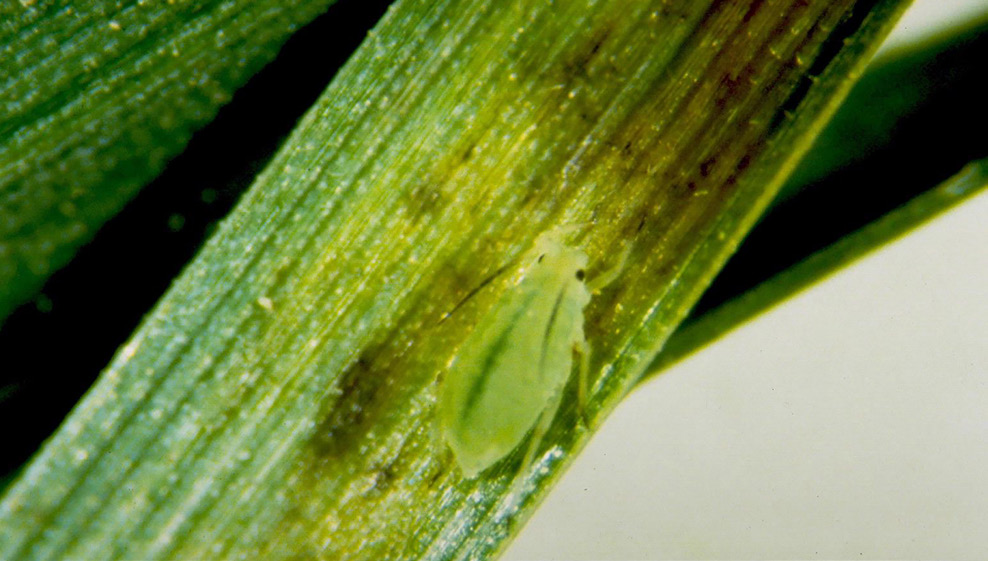 Figure 2. Greenbug and damage. (Photo: Frank Peairs, Colorado State University, Bugwood.org)
Figure 2. Greenbug and damage. (Photo: Frank Peairs, Colorado State University, Bugwood.org)
The greenbug is a major pest of wheat in Oklahoma, but pervasive outbreaks are uncommon and widely scattered in most years. Greenbugs are more likely to infest early-planted fields. Outbreaks occur more often during a mild winter followed by a cool spring, especially if plants are suffering from lack of moisture. Such conditions favor aphid survival while reducing the impact of the greenbug’s natural enemies. Greenbug outbreaks are less likely in wheat grazed by cattle.
The Russian wheat aphid (RWA) is about 1/16 inch long, lime green in color and “spindle shaped” (Figure 3). It has short antennae and no prominent cornicles. It has a projection above the “tail” that gives it a double tail appearance.
RWA first occurred in Oklahoma in 1989. It overwinters in Oklahoma but is not a widespread pest, typically being confined to the Oklahoma Panhandle. It is a pest of wheat and barley and will most likely be found during spring in winter wheat. Several native grasses are suitable as summer hosts, including downy brome, blue gramma, jointed goatgrass, wild oats and several species of wheatgrass. Fortunately, the RWA does not appear to survive on corn or sorghum.
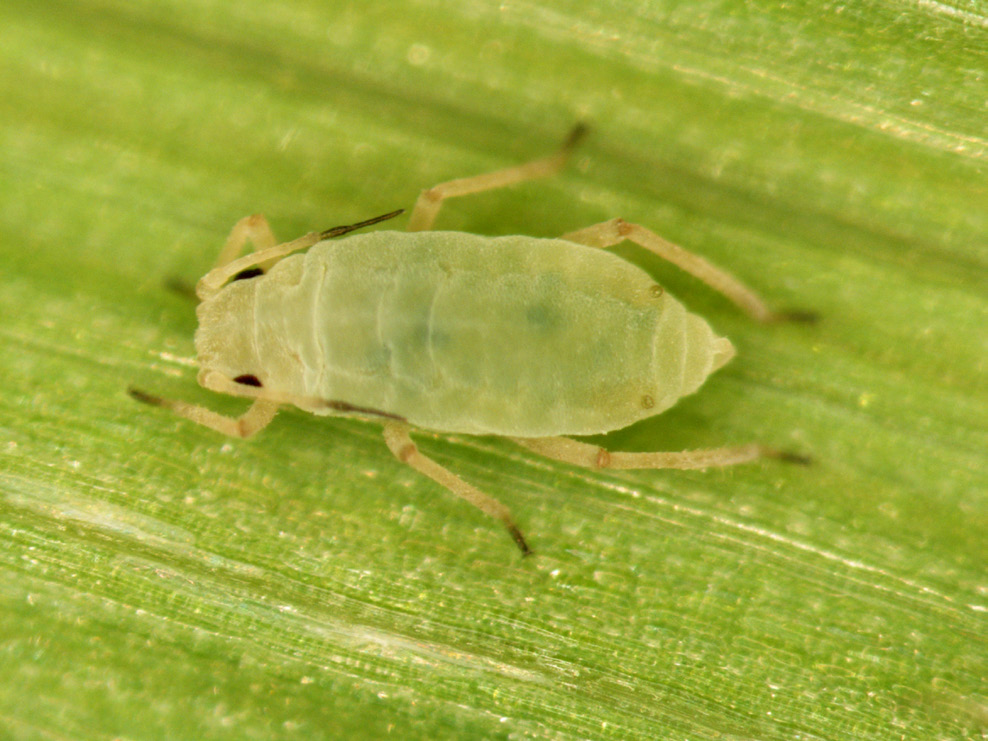 Figure 3. Russian Wheat Aphid. (Photo: Richard Grantham, Oklahoma State University)
Figure 3. Russian Wheat Aphid. (Photo: Richard Grantham, Oklahoma State University)
The RWA can injure and cause yield loss in wheat even at low numbers. They feed on the newest growth of the plant and like the greenbug, injecting chemicals during feeding that affect plant growth. As the RWA feeds, it causes the leaf to curl and enclose the aphid, which protects it from climate, natural enemies and insecticides. That plant response also can impede the wheat head from emerging. Visible damage symptoms include white, yellow or purple longitudinal streaks on leaves, depending upon weather and growth conditions (Figure 4). As wheat heads emerge, they may become trapped, which reduces pollination and grain fill. One or more symptoms may be present on plants in a field. While resistant wheat varieties have been developed for Russian wheat aphid, a new strain of aphid has appeared that can overcome the resistant wheat varieties. The new resistant wheat varieties were based on the genetic background found in the “Halt” wheat variety.
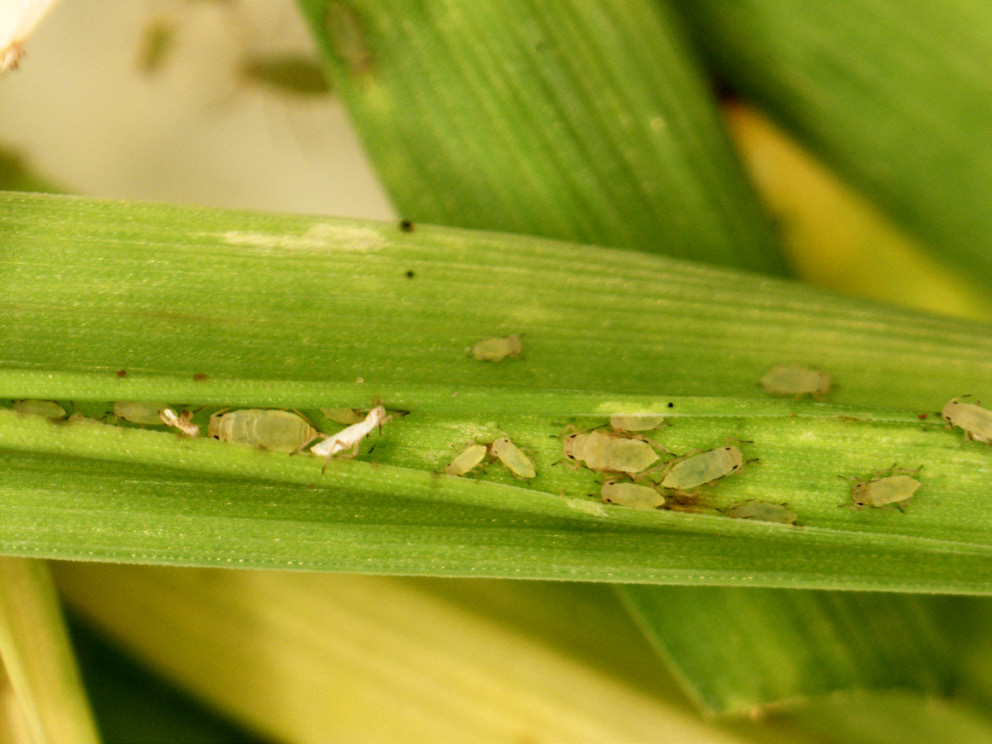 Figure 4. Russian wheat aphid and damage. (Photo: Richard Grantham, Oklahoma State University)
Figure 4. Russian wheat aphid and damage. (Photo: Richard Grantham, Oklahoma State University)
The bird cherry-oat aphid (BCOA) is 1/16 inch long, olive-green colored with a red-orange patch surrounding the base of each cornicle (Figure 5). “Old” aphids found in winter and early spring often are black, but will give birth to more typically colored aphids in the spring. The bird cherry-oat aphid is a very efficient vector of the virus that causes BYD disease. Bird cherry-oat aphids do not cause visible damage symptoms to the plants they feed on, but are capable of reducing yield of both forage and grain. They occur throughout the wheat growing season.
Figure 5. Bird cherry-oat aphid. (Photo: Richard Grantham, Oklahoma State University)
Rice root aphids (RWA) are very similar in appearance to BCOAs, but have “hairy” antennae and like to feed on the crown roots below the soil surface (Figure 6). They typically appear in the fall, soon after wheat emerges. Recent research suggests that rice root aphids may affect forage yield, but there is less evidence they reduce grain yield. They are capable of transmitting the BYD virus.
Figure 6. Rice root aphid (note the hairy antennae, legs and body. (Photo: Richard Grantham, Oklahoma State University)
The corn leaf aphid (CLA) is 1/32 inch long, bluish-green, with short, black cornicles and black antennae and legs (Figure 7). It is more common in sorghum or corn, but may occur on seedling wheat in autumn or on mature wheat late in the growing season. It is a known vector of the virus that causes BYD disease.
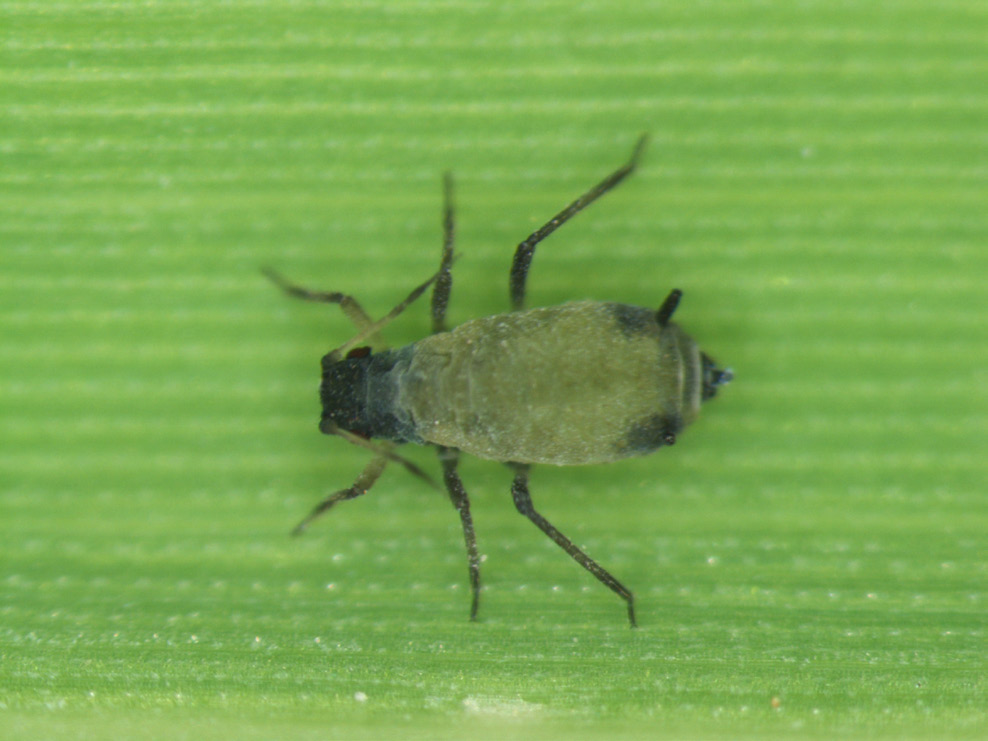 Figure 7. Corn leaf aphid. (Photo: Richard Grantham, Oklahoma State University)
Figure 7. Corn leaf aphid. (Photo: Richard Grantham, Oklahoma State University)
The English grain aphid (EGA) is larger (about 1/8-inch-long) and has a “spidery” appearance due to its long legs and narrow, long cornicles. The body of the English grain aphid is green but both cornicles and legs are completely black (Figure 8). It occurs most often late in the growing season and prefers to feed on the awns of wheat heads. It is a known vector of the virus that causes BYD disease.
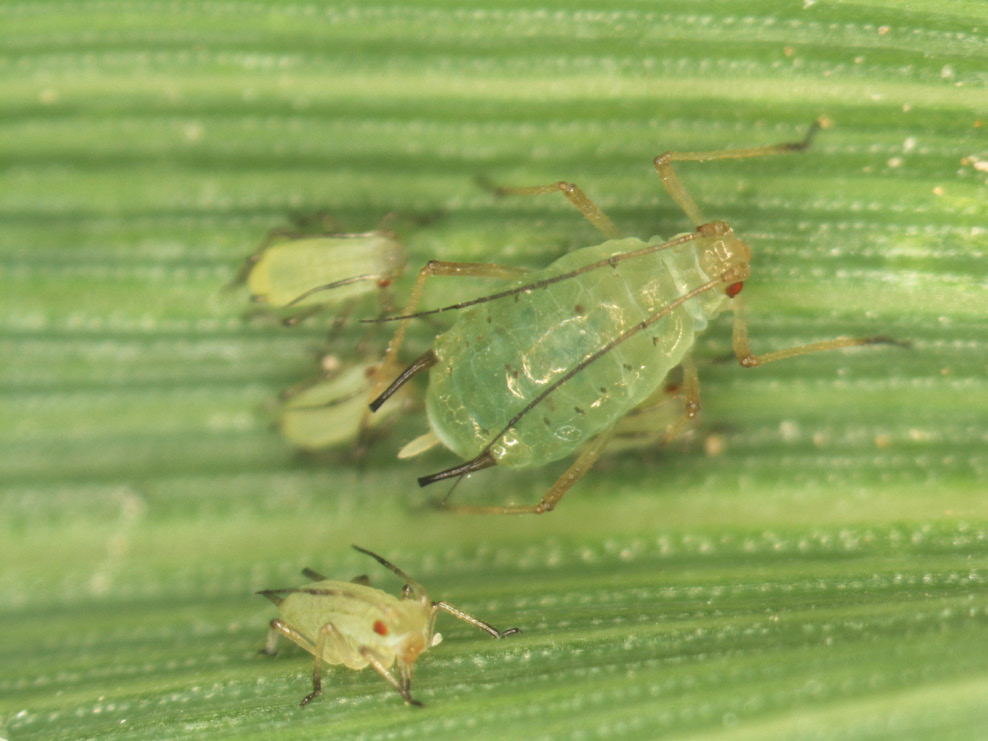 Figure 8. English grain aphid. (Photo: Richard Grantham, Oklahoma State University)
Figure 8. English grain aphid. (Photo: Richard Grantham, Oklahoma State University)
The English grain aphid and corn leaf aphid are not economically important pests of Oklahoma winter wheat. However, research conducted at OSU in winter wheat and in northern grain-producing states in spring wheat suggests that feeding by BCOA causes economic injury. BCOA also is a principal vector of the BYD virus, so consider its capacity to spread disease.
**Sipha maydis,(sometimes called the hedgehog grain aphid) was first reported in the U.S. in 2007, and has been reported in Georgia, Florida and California. In 2014, it was found in spring oats in New Mexico. In 2015, it was found in some winter annual grasses and winter wheat in western Colorado and in Alabama. To date, it has not been found in Oklahoma wheat; however it is a potential aphid pest Oklahoma producers should watch for.
This aphid is very different in appearance from the other small grain aphids. It is pear shaped, 1/16 inch long with a dark brown to black body color and under magnification, its body is covered with white, spine-like hairs (Figure 9). Its preferred hosts are barley and wheat but can feed on 30 species of grasses, including corn, sorghum and oats. Symptoms of an infestation include yellowing of leaves around feeding colonies, leaf rolling and leaf desiccation.
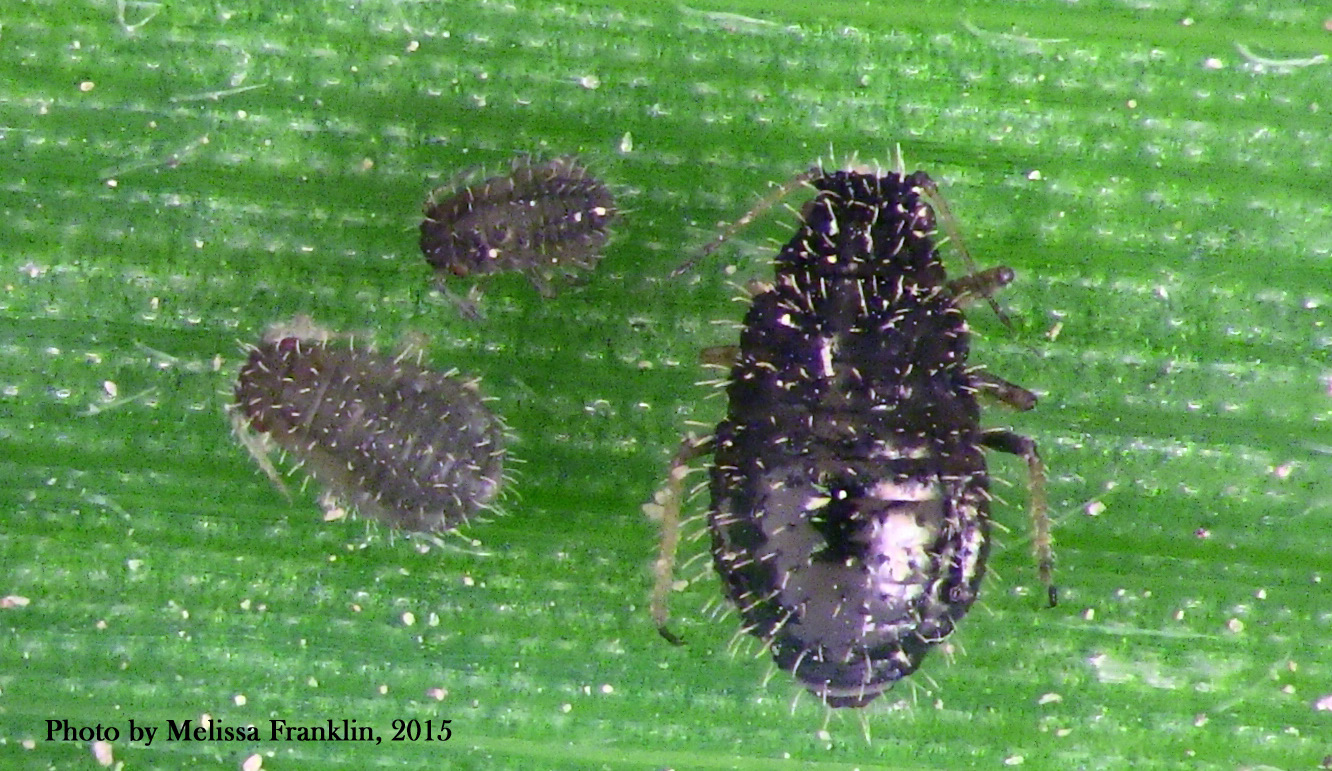 Figure 9. Sipha maidis. (Photo: Melissa Franklin)
Figure 9. Sipha maidis. (Photo: Melissa Franklin)
Integrated Control of Small Grain Aphids
Natural Control
Aphids have numerous natural enemies, including several species of parasitic wasps that lay eggs inside the body of the aphid. The aphid swells and turns tan colored as the immature wasp feeds inside. This dead, tan colored aphid is termed a “mummy” and remains attached to the wheat plant (Figure 10). The parasitic wasp, Lysiphlebus testaceipes, is an important natural enemy of all cereal aphids, especially the greenbug and bird cherry-oat aphid.
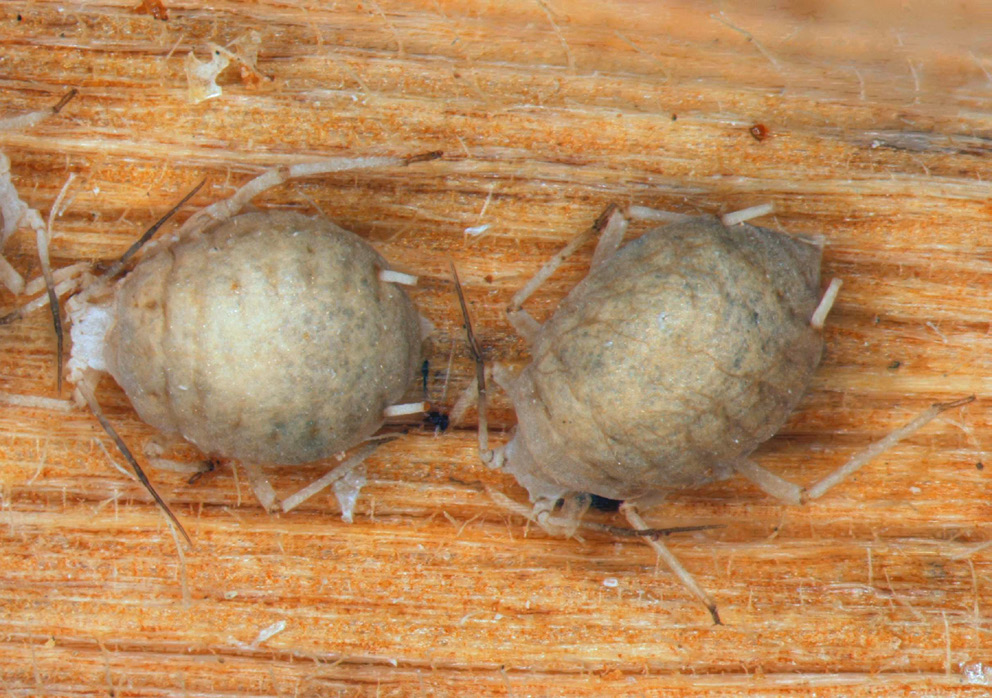 Figure 10. Greenbug mummies from Lysiphlebus wasp parasitoid. (Photo: Richard Grantham, Oklahoma
State University).
Figure 10. Greenbug mummies from Lysiphlebus wasp parasitoid. (Photo: Richard Grantham, Oklahoma
State University).
Small grain aphids have other natural enemies, such as lady beetles (Figure 11), lacewing larvae (Figure 12) and hoverfly larvae (Figure 13). Generally, if weather conditions are favorable and more than two of these predator insects are present per row-foot, there is a good possibility they can suppress aphid populations without insecticidal control.
 Figure 11. Ladybeetle adult (top) and larva.
Figure 11. Ladybeetle adult (top) and larva.
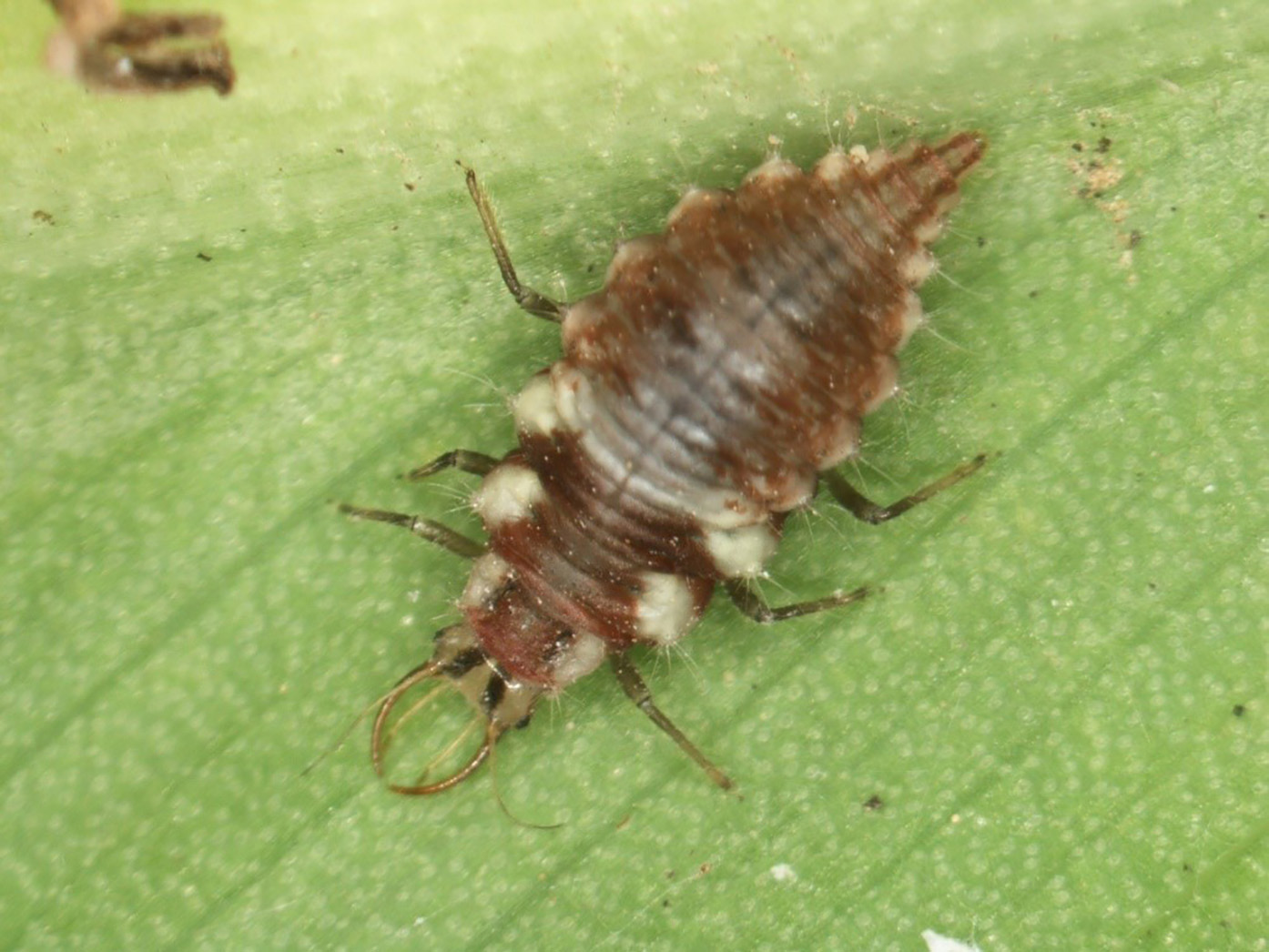 Figure 12. Lacewing adult (top) and larva.
Figure 12. Lacewing adult (top) and larva.
 Figure 13. Syrphid adult (Hoverfly, top) and larva.
Figure 13. Syrphid adult (Hoverfly, top) and larva.
Presently, natural enemies that reliably suppress RWA numbers are scarce. However, natural enemies are very important for control of the other cereal aphids. Lady beetles seem to help keep low levels of aphids from increasing, but are incapable of reducing outbreak populations. Several exotic parasitic wasps of aphids have been imported and released, but are not established well enough for full evaluation.
Cultural Control
In the southern Great Plains, winter wheat is grown for grain, for forage or for forage and grain. The first step in a well-designed IPM program is optimal variety selection, based upon production objective, pest problems and compatibility with local soil and climate. Determine the optimum planting date based upon whether the objective is to produce grain only, forage and grain or forage only. Aphid populations tend to be lower in grazed fields. Delayed planting can reduce the threat of aphid infestation in the fall, thus, reducing the incidence of BYD disease. The crop required adequate fertility to ensure optimum plant development and growth. The control of volunteer plants between harvest and planting may reduce the risk of an early infestation. Reduced tillage that preserves plant residue on the soil surface has been shown to reduce aphid colonization. If you are planting winter wheat in an area with a history of Russian wheat aphid, select a variety resistant to that pest, but make sure the resistance is still effective.
Sampling and Decision Making for Chemical Control
Field scouting, or pest monitoring, is a cornerstone of any effective IPM program. A good scouting program starts with correct identification of the pests, followed by collecting an accurate, unbiased count of the insects present. Think of field scouting as a way to take a good picture of the field, so random samples should be collected that represent the entire field. One sample should not represent more than 160 acres, so if the field is larger than a section (160 acres), divide it into one-section blocks and take additional samples. Use a “W” or “U” shaped pattern and combine patterns for irregularly shaped fields.
Greenbug
Greenbug feeding can be confused with signs of moisture stress or a nutrient deficiency. Since greenbug injury resembles other plant problems, it is important to thoroughly scout the field and determine if greenbugs are causing the problem. It has been found that grain yield has suffered tremendously by the time symptoms of greenbug infestations become visible. It is important to detect greenbug infestations before they cause visible injury.
An easy method for sampling greenbugs, called Glance-N-Go™ sampling, is available to winter wheat producers in Oklahoma as a smartphone app. Glance-N-Go™ allows a producer to determine a customized treatment threshold based upon the value of their crop and the control costs they will incur. The system accounts for and considers natural enemy activity when calculating a treatment threshold.
Sampling involves examining tillers and keeping a tally of tillers infested with greenbugs, and tillers that have aphid mummies attached to them. Our evaluation of the Glance-N-Go™ system shows on average, it takes from five minutes to 10 minutes to scout a field and make a decision to treat or not treat. By using Glance-N-Go™, a scout can maximize scouting efficiency by spending little time in fields are way below, or way above the treatment threshold and focus on fields close to the threshold.
To access the Glance-N-Go™ smartphone app, contact your local County Extension Office or go to the DASNR app listing website http://www.dasnr.okstate.edu/apps. County Extension educators can help with the use of the Cereal Aphid Expert System and Glance-N-Go™.
Russian Wheat Aphid
Russian wheat aphids occasionally occur in Oklahoma. They are most likely to occur in the Oklahoma Panhandle counties of Cimarron, Texas and Beaver, but may be found in any area depending on planting date and growing conditions. As Russian aphids feed, they cause wheat leaves to roll up, which protects them from natural enemies. These infested tillers are sometimes referred to as “onion leaves” because they are tightly rolled and may be discolored with whitish, yellowish or purple streaks. When scouting, unroll any potentially infested leaves to make sure the aphid is present.
For scouting, examine and count the number of tillers containing Russian wheat aphid. Walk a diagonal or zigzag pattern across the field, stop 10 times and collect 10 tillers at random at each stop. (To avoid bias, take the 10 tillers closest to your foot or every third tiller starting with the one closest to your foot).
The following thresholds were calculated using the formula:
Treatment Threshold (% infested tillers) = (Control Cost x 200) ÷ (Expected Yield per Acre x Expected Wheat Price).
Select the threshold that fits most closely to the expected yield, expected wheat price and control costs.
Table 1. Treatment thresholds for Russian wheat aphid in wheat.
| Expected Yield (Bushels/Acre) | 25 bu | 35 bu | 45 bu | 55 bu | ||||||||
|---|---|---|---|---|---|---|---|---|---|---|---|---|
| Expected Wheat Price ($Bushel) |
$3 | $4 | $5 | $3 | $4 | $5 | $3 | $4 | $5 | $3 | $4 | $5 |
| Control Cost ($5/Acre) Treatment Threshold (% infested tillers) |
13 | 10 | 8 | 10 | 7 | 6 | 7 | 6 | 4 | 6 | 5 | 4 |
| Control Cost ($10/Acre) Treatment Threshold (% infested tillers) |
27 | 20 | 16 | 19 | 14 | 11 | 15 | 11 | 9 | 12 | 9 | 7 |
Bird Cherry-Oat Aphid
Historically, BCOA was considered a less important wheat pest that causes direct yield loss because it does not produce visible signs of injury. Recent research suggests that bird-cherry oat aphid can reduce yield if numbers become high. If populations exceeded an average of 25 to 30 BCOA’s per tiller before heading a 5% yield loss could occur and if populations averaged 50 or more per tiller, a 10% loss could occur.
Bird cherry oat aphids are present in winter wheat in Oklahoma throughout the year. A producer may need to make a control decision if numbers get too high. To accurately determine the need for control, growers should; have a good estimate of aphid numbers, know the value of their crop and know the cost of control.
Estimate aphid numbers by averaging counts of aphids on 75 randomly selected tillers (three tillers at 25 locations) per field. Consult the table and line up the control costs with the market value of the wheat crop. If the average number of BCOA in the field exceeds the number listed in the table, then treat with an insecticide.
Chemical Control
Insecticides play an important role in an integrated control program. Seed treatments have been shown to reduce the transmission and impact of barley yellow dwarf disease. The decision to spray and the selection of insecticide are critical in designing a successful chemical control program. Select the insecticide based on its effectiveness, its potential impact on beneficial insects, its potential environmental hazard and its residual activity. Growing conditions influence the amount of injury inflicted by aphids and the level of control expected from an insecticide application. Generally, dry conditions increase injury from aphid feeding and decrease control with an insecticide.
General guidelines for application include:
- Apply the insecticide with the proper amount of carrier (at least 10 gallons per acre by ground and 2 gallons per acre by air).
- Check the label for restrictions on minimum temperature for application. Some insecticides are less effective in cold weather, while others are actually more effective.
- Don’t spray if wind velocity exceeds 8 mph to 10 mph.
- With adverse conditions, the addition of a surfactant may enhance coverage.
Specific Insecticide recommendations may be obtained in OSU Current Report CR-7194 “Management of Insects and Mites on Small Grains.
Table 2. Treatment thresholds for bird cherry oat aphid in wheat.
Market value of Crop ($ per acre)
| Market value of Crop ($ per acre) | ||||||||
| $50 | $75 | $100 | $125 | $150 | $175 | $200 | $250+ | |
| Control Cost ($ per acre) |
Average # Bird cherry-oat aphids per tiller | |||||||
| $4.00 | 50 | 50 | 25 | 25 | 25 | 25 | 25 | 25 |
| $5.00 | 50 | 50 | 25 | 25 | 25 | 25 | 25 | 25 |
| $6.00 | DNT | 50 | 50 | 25 | 25 | 25 | 25 | 25 |
| $7.00 | DNT | 50 | 50 | 50 | 25 | 25 | 25 | 25 |
| $8.00 | DNT | DNT | 50 | 50 | 50 | 25 | 25 | 25 |
| $9.00 | DNT | DNT | 50 | 50 | 50 | 50 | 25 | 25 |
| $10.00 | DNT | DNT | 50 | 50 | 50 | 50 | 50 | 25 |
| $11.00 | DNT | DNT | DNT | 50 | 50 | 50 | 50 | 50 |
| $12.00 | DNT | DNT | DNT | 50 | 50 | 50 | 50 | 50 |
DNT = Do Not Treat


